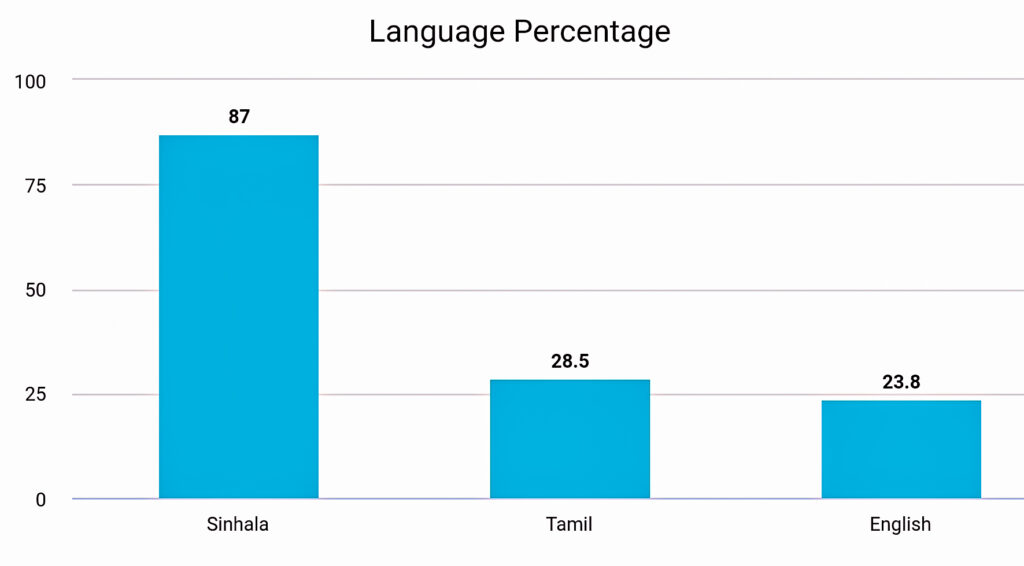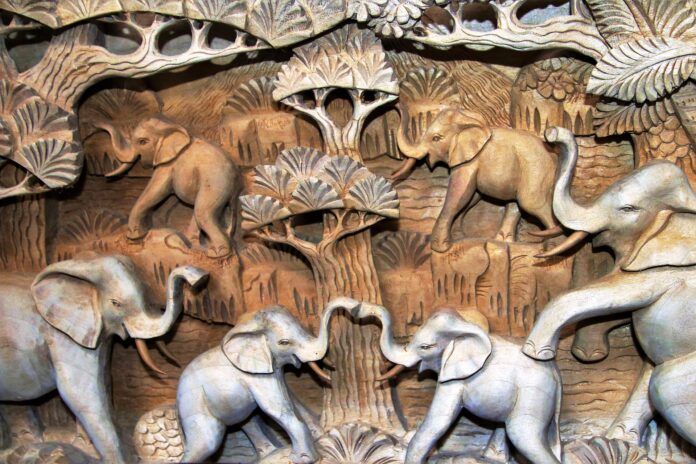In the Indian Ocean, off the coast of India, an island appears a place that may not be known to many, this is Sri Lanka, a country of a little more than 20 million inhabitants. Sri Lanka, the pearl of the Indian Ocean, or better known as the teardrop of India, is a country with a rich cultural diversity, varied traditions and a long history that goes back thousands of years. Part of its cultural heritage is widely related to its two official languages: Tamil and Sinhala which, despite having different origins, have fed back on themselves, managing to develop common linguistic characteristics. Although both languages coexist and are spoken in Sri Lanka, they come from different linguistic families; Sinhala is an Indo-Iranian language belonging to the Indo-European family, while Tamil belongs to the Dravidian family. Despite sharing the same island, both languages have their own characteristics that make them different from each other.

Sinhalese has a long literary history, with very old literary works dating back to the 8th century and pre-inscriptions to the 3rd and 2nd centuries BC. In addition to the continuing influences of various Indo-European languages, the indigenous Vedda language of Sri Lanka, the arrival of Buddhism on the island, and close contacts with the Dravidians (Tamils in particular) have shaped the modern Sinhala language in a unique way, setting it apart from other modern Indo-Aryan languages of the Indian subcontinent.
This language comes from the one spoken by the warriors who arrived on the island in the 6th century BC. C., probably because of the old land bridge that, according to historical records, connected Sri Lanka with the rest of India – and therefore Sri Lanka was a peninsula – (but which disappeared due to a violent storm, probably a cyclone, in the year 1480). It was these warriors who managed to impose their culture, language and political dominance on the majority of the native population. It is at this point that both languages meet directly, later imposing Sinhala as the majority language of the Island.
The Tamils developed a different culture and politics than the Sinhalese. Relations between these two peoples have always been complex, between wars and ceasefires and invasions in both directions. Despite these differences and the usual conflicts, Sinhala and Tamil share a wide range of morphosyntactic characteristics. Sinhala has long been isolated from the other Indo-European languages and has coexisted with Tamil since both arrived in Sri Lanka from India. This coexistence is believed to have led to what is known as the contact-induced restructuring that Sinhala morphosyntax has undergone on the Tamil pattern, preserving its Indo-European lexicon. In addition, like other South Asian languages, both languages share the area characteristics of this region. Sinhala has a rare subtractive system in nominal morphology, where inanimate plural forms are derived by removing the final vowel from singular counterparts, at least in their nominative and accusative form. Just as the animate and inanimate play an important role in nominal morphology, the syntax of the Sinhala is very sensitive to the volitional trait of the primary event participant, which complicates the identification of the subject grammatical relationship. In terms of speech, Sinhala allows “understood” elements to be dropped quite freely even though there is no verbal agreement.
In the case of Tamil, this language has 2,200 years of history. The oldest extensive Tamil records, preserved on palm fronds and on copper plates, are more than 2,000 years old, although the most archaic known text is from 254 BC, a stone inscription in Brahmi script from Asoka time. Its origins are not well known, but it developed and flourished in India. This language also has a rich and ancient literary tradition: the first writings of this language, consisting of lyrical poetry and a grammar, date back to the 1st century AD. The order of the sentence is usually subject, predicate and verb. Some words have passed from Tamil to Spanish and other languages, such as catamaran (kattamaram), mango (mankay) and curry (kari). Currently, as Tamil is receiving great influence from other languages, its writing system is having problems when it comes to representing the new words.
Even so, Sinhala, despite being the language of the majority in Sri Lanka, has fewer speakers than Tamil, which is also spoken in India and is better known for this, currently occupying 77 million speakers and ranked No.18 among the most widely spoken languages worldwide. In addition, Tamil is also an official language in India and Singapore, as well as important areas of speakers in Malaysia. On the other hand, the Sinhalese only refers to the island of Sri Lanka. Due to the type of writing in both languages (derived from the Brahmi script), some people might think that it is the Hindi language or some other language from India, however, a large number of regions outside of Hindustan use scriptures derived from Brahmi. However, even so, despite having converged in many different aspects, the speech of Tamil or Sinhala has been one of the cultural reasons that have served to highlight the differences between the two groups in Sri Lanka, which have resulted in an ethnic conflict, which was not controlled until a decade ago.
Finally, in Sri Lanka, the Sinhalese and Tamils maintain a bilingual life in which, in addition to their native languages, English is used to communicate with the people of different ethnic groups on the island, which is why the use of this current model allows preserve the culture and language of the two ethnic groups. Despite the very different origins, the speakers of both languages have shown intentions in coexist and live in peace and harmony on the island; knowing the languages of Sri Lanka allows us to better understand its history, culture and especially its people. For this reason, Sri Lanka is a unique place with incredible people who are worth knowing and that in each word expressed there is a history and unique characteristics.
